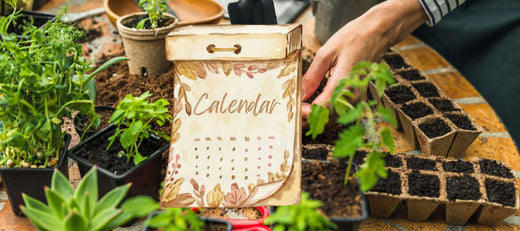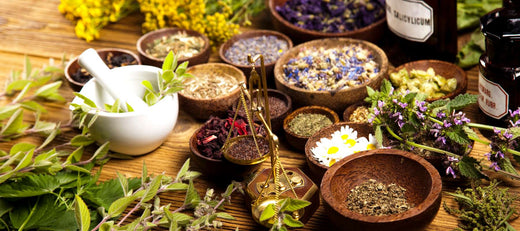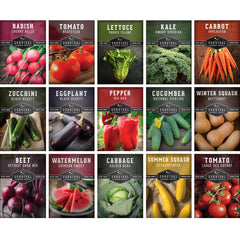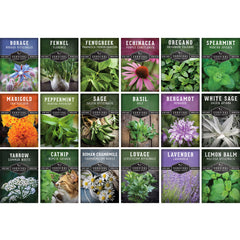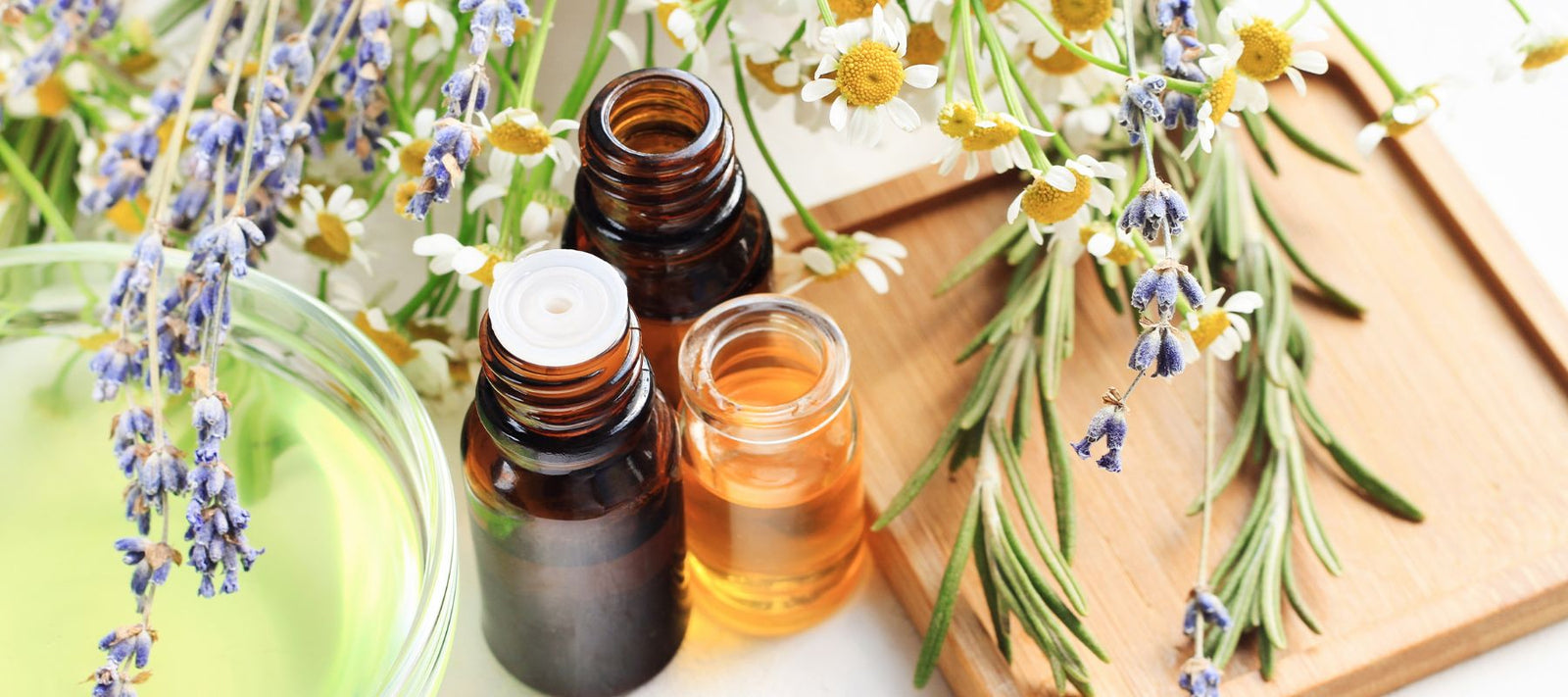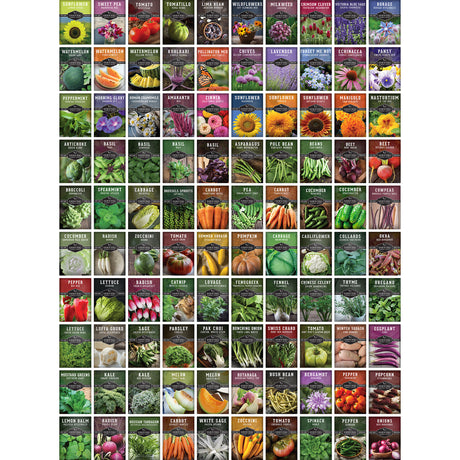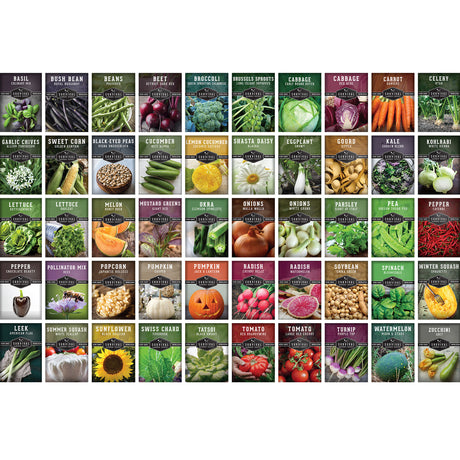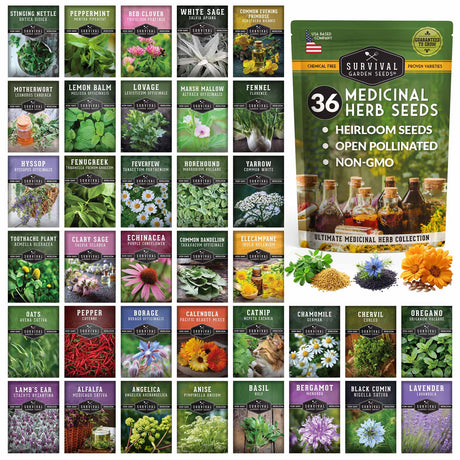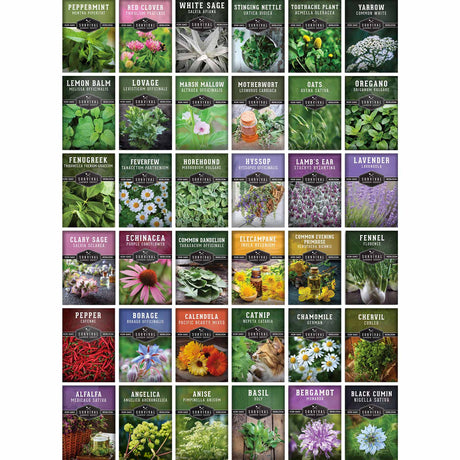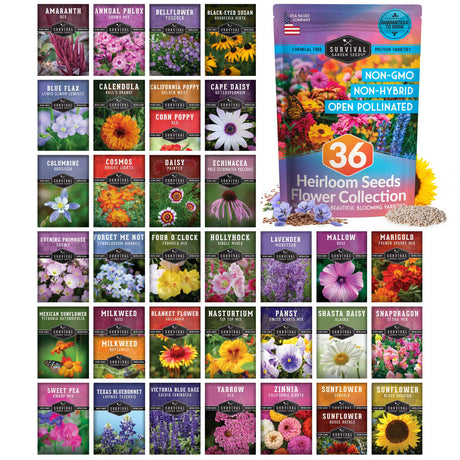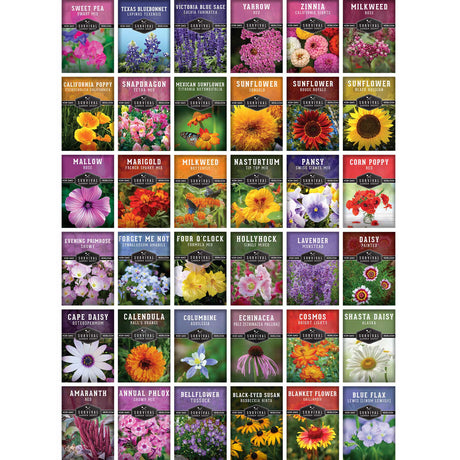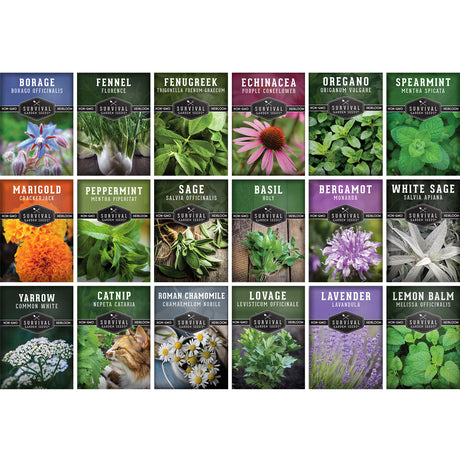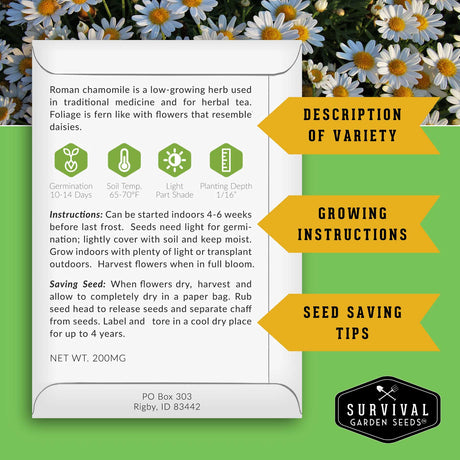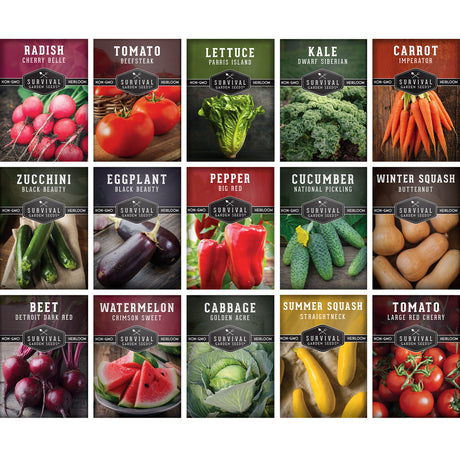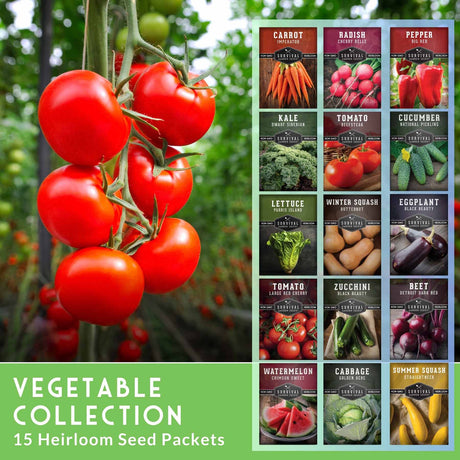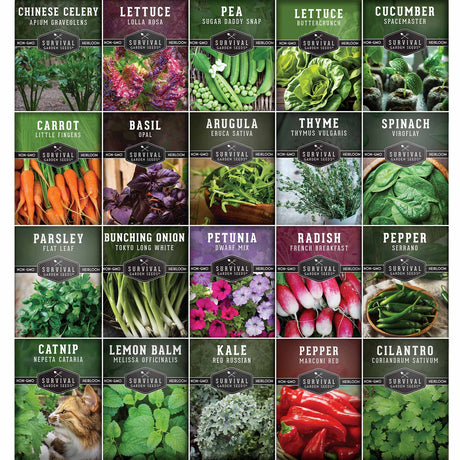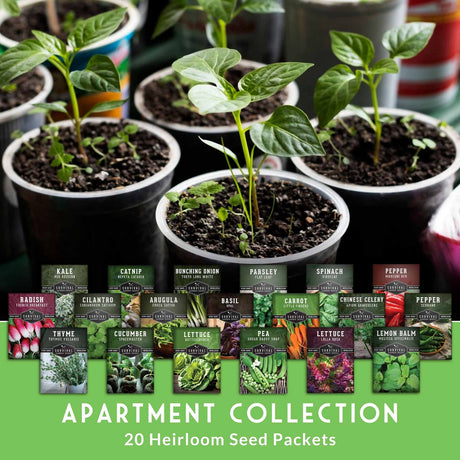Today’s world is enough to drive you out of your mind, but thankfully nature is always there to take good care of you. Adding natural herbs for stress and anxiety to your home garden can provide you with the ingredients for a nice steaming cup of herbal tea to soothe your frazzled nerves. Let’s take a look at some of the most powerful stress-relieving herbs, how to grow them in a wellness garden, and the best ways to incorporate them into your self-care routine. Consult with your healthcare provider before adding anything new to your routine, especially if you have allergies or special considerations, as they will be able to work with you on a personal level.
Powerful Stress Support Herbs
Many medicinal herbs are rich in antioxidants or immune system boosters to help the body cope with physical stress. However, here we want to focus on those that directly support relaxation, sleep, and mood balance.
German Chamomile

If someone has had a long day or is feeling exceptionally strung out, a cup of chamomile tea is often the first remedy they’ll turn to calm their nerves. Research supports German Chamomile as a powerful anxiolytic (anxiety-reducer) and as sleep support, with the active compound apigenin possibly being the key to calming the nervous system. Be aware that if you are allergic to ragweed or daisies, you may also be allergic to chamomile. If that’s the case, don’t fret! Parsley is another herb that’s high in apigenin that you may want to experiment with as an alternative.
- Botanical Name: Matricaria chamomilla / Matricaria recutita
- USDA Hardiness Zones: 3-9
- Light: Full Sun to Partial Shade
- Plant Size: 6-12 Inches Tall, 6-12 Inch Spread
- Days from Seed to Bloom: 60-70 Days
- Growing Instructions: Start seeds indoors 6-8 weeks before the last frost or sow directly outdoors after the danger of frost has passed. German chamomile needs light to germinate, so sow seed on the surface of well-draining soil and press in gently. Space 6-8" apart in a sunny spot with well-draining soil.
Lavender

Another herb that springs to mind when you’re feeling out of sorts is Lavender. This popular medicinal herb has also been well-studied, with researchers finding powerful benefits for the nervous system including anticonvulsant, antidepressant, anxiolytic, sedative, and calming properties. The soothing scent of these pretty purple flowers can help break a headache and lull you to sleep at night. The leaves and flowers can be used in herbal teas or distilled into Lavender essential oil for aromatherapy use.
Full sun, sandy soil, avoid clay, drought tolerant, avoid overwatering
- Botanical Name: Lavandula angustifolia
- USDA Hardiness Zones: 5-9
- Light: Full Sun
- Plant Size: 12-18 inch bushy shrub
- Days from Seed to Bloom: At least 200 days, more likely in the second or third year
- Growing Instructions: Cold stratify to improve germination by sprinkling seed onto a wet paper towel, folding, and placing them in a plastic bag. Keep the seeds in the refrigerator for 3 to 4 weeks, checking frequently for mold. Sow the seed by barely covering with soil and keeping moist. Lavender needs light and warmth to sprout. Transplant outdoors 4-6 weeks after plants emerge. Space plants 18 inches apart.
Lemon Balm

Lemon balm is a calming, uplifting, relaxation support that can be combined with other herbs or used alone to support mental health by reducing anxiety and promoting better sleep. This gentle herb won’t make you quite as sleepy as some of the others on our list, so it’s a good choice for day or nighttime, promoting mental focus and clarity while helping you chill out. Lemon balm is great as an herbal tea or taken in dried form. Lemon balm extract is also great to apply topically to cold sores that can pop up when you’re feeling stressed out.
- Botanical Name: Melissa officinalis
- USDA Hardiness Zones: 3-9
- Light: Full Sun
- Plant Size: 2-3 feet, spreads easily. This is a perfect option for both indoor and outdoor container gardening.
- Days from Seed to Bloom: 55-70
- Growing Instructions: Can be started indoors 8-10 weeks before last frost. Seeds need light for germination, so barely cover them with soil. Removing flowers can extend harvest. Plant 18-24 inches apart. Harvest as needed.
Peppermint

Peppermint is a great option for stress support when you want to stay alert during the daytime. It’s a mild muscle relaxant that can help with tension headaches. Peppermint can also help reduce fatigue, boost mood and brain function, and even help relieve stress-related digestive issues like irritable bowel syndrome. You can use peppermint in so many ways: fresh or dried in herbal tea, distilled into an essential oil for fragrance and topical use, or even as an addition to your favorite foods.
- Botanical Name: Mentha piperita
- USDA Hardiness Zones: 3-9
- Light: Full Sun
- Plant Size: 2 feet, spreads easily. Another great choice for containers indoors or outdoors.
- Days from Seed to Bloom: 60 days
- Growing Instructions: Start indoors 6-8 weeks before last frost. When seedlings reach 2 inches transplant to a container or directly in the garden in a partially shaded spot with moist rich soil. Mint benefits from frequent harvesting.
Motherwort

Another member of the mint family that can help with stress is Motherwort. This aptly named herb has long been used for women’s health, particularly in the regions of central Asia where it has been cultivated since antiquity. There is a growing body of research backing the various benefits of this medicinal herb. If you suffer from PMS or other hormone related stress, it’s a great choice. Motherwort also appears to have protective effects on the cardiovascular system and can help support healthy blood pressure.
- Botanical Name: Leonurus cardiaca
- USDA Hardiness Zones: 3-9
- Light: Full sun to partial shade
- Plant Size: 3-6 feet tall, 1-2 foot spread
- Days from Seed to Bloom: 60-80 days
- Growing Instructions: Sow seeds directly in the garden or container. Choose a location in full sun to partial shade with well-drained soil. Water regularly, but do not let the soil get soggy. Motherwort can spread easily, so growing this one in pots may be a good idea, depending on your situation.
Holy Basil (Tulsi)

An extremely easy medicinal plant to grow from seed is Holy Basil. Considered a sacred herb in India, this adaptogenic herb helps your body respond to whatever life throws at you—stress, illness, fatigue, and more. It helps to balance stress hormones like cortisol and promote mental clarity and a more even mood. It also supports your immune system. Holy Basil can be brewed as tea, taken as a tincture, or even eaten fresh. It’s also extremely easy to grow, just like other basil varieties with some additional resilience to heat and drought.
- Botanical Name: Ocimum africanum or Ocimum tenuiflorum
- USDA Hardiness Zones: 3-11
- Light: Full sun
- Plant Size: Up to 2 feet tall
- Days from Seed to Bloom: 60 days
- Growing Instructions: This hot weather plant does best if started indoors in a warm environment and either moved outside once all frost danger is past, or grown indoors with a lot of light. Prune frequently and pinch off flowers to encourage bushiness and prolong harvest.
Valerian

For serious relaxation and sleep support, Valerian is one of your strongest herbal options available. Sometimes called “Nature’s Valium,” Valerian root has been used for centuries to promote deep sleep and calm the nervous system. Scientists believe it works by increasing the amount of GABA in the brain, similar to the way Valium works. It has a powerful sedative effect on me, but some people experience the opposite effect and feel more energized instead of sleepy after using Valerian. This may be why there’s no definitive scientific consensus on Valerian as a sleep aid. You might want to take a test drive with some Valerian tea from the grocery store to see if it’s a good option for your herb garden. It’s most often used as a tincture or tea made from roots harvested after the second year.
- Botanical Name: Valeriana officinalis
- USDA Hardiness Zones: 3-9
- Light: Full sun to partial shade
- Plant Size: Up to 6 feet tall with a 1-2 foot spread
- Days from Seed to Bloom: 1-2 years
- Growing Instructions: Start indoors and keep temperatures steady until germination, or sow directly in the garden in early spring after frost danger has passed. Keep seedlings moist but not waterlogged. Space plants 12-24" apart in well-drained soil.
In today's world, we can all use a little stress relief. These medicinal herbs can provide that natural support for relaxation and mental well-being. Plus, you’ll enjoy the therapeutic benefits of gardening itself and save big by growing your own. So why not let Mother Nature take care of you? Grab some seeds and create your own stress-relief sanctuary in your backyard or on your windowsill.


